Mozambique: Customs officer arrested for corruption in Beira
Insurgency dynamics in Nampula and Niassa; since before first attacks in Mocímboa: IESE | Ikweli report

Image: Google Maps
Mozambique’s Institute of Social and Economic Studies (IESE) says in a research published this Tuesday that the provinces of Nampula and Niassa, in the north of Mozambique, already presented evidence of the existence of radical religious cells before the first terrorist attack on the village of Mocímboa da Praia in October 2017.
Also read: Individuals allegedly linked to Al Shabaab attack police station in Mocímboa da Praia – Mozambique
Mocímboa da Praia rocked by riots since dawn today – Mozambique
With the outbreak of armed violence, these cells began to function as important recruiters to the ranks of the insurgents in Cabo Delgado.
Looking at these cells, it is interesting to note similarities with what happened in Cabo Delgado. First, religious cells are established, and later, military cells.
“Our interviews show that the religious cells were established by Tanzanian or Mozambican individuals who attended Salafist-style mosques in Tanzania,” regular IESE publication Ideias, published in Maputo on Tuesday (March 9), relates.
The document, co-authored by Mozambican academics Salvador Forquilha and João Pereira, goes on to state that “when these individuals arrived in Nampula and Niassa, they first sought to penetrate the local mosques”.
Examples include Mutotope, outside the city of Nampula, in 2017; Memba (Nampula province), in 2016; Mecula, in 2017, and Lichinga (Niassa province), in 2014/15.
In all of these cases, as occurred in Cabo Delgado, they encountered resistance from local Muslim religious leaders, both from the Islamic Council of Mozambique (in the case of Lichinga and Mutotope), and from the Islamic Congress (in Mecula). As a result, they decided to build their own places of worship.
“Resistance on the part of religious leaders was accompanied by complaints from local authorities, as happened in the districts of Cabo Delgado in the early stages of the phenomenon,” the article details.
However, according to the same analysis, “it is important to note that, unlike Cabo Delgado, the Nampula and Niassa cells were not able to militarise and trigger large-scale armed actions against state institutions and civilian populations.”
“This difference may be related to at least two factors, namely: a) better coordinated action in Nampula and Niassa between government authorities and local Muslim religious leaders in denouncing elements of the group and, in some cases, their neutralisation; and b) difficulties on the part of the group in establishing logistics capable of triggering and feeding armed attacks in Nampula and Niassa.
“Despite this, in areas where the group was able to establish religious cells with a radical tendency, these cells started to function as important centres for recruiting young people with a view to their integration into the ranks of [the so-called] Al-Shabaab in the districts of Cabo Delgado”.
Even so, according to the IESE study, “evidence on the ground suggests that the elements that make up the [so-called] Al-Shabaab group do not come solely from Cabo Delgado.
Also read: Mozambican woman publicly whipped in Mocímboa da Praia for criticising politicians
“Indeed, dynamics associated with the evolution of violence allowed the Al-Shabaab to install a vast and complex recruitment network, enabling the incorporation of combatants not only from abroad, but also from different places in the interior of Mozambique, with emphasis on Nampula and Niassa, a fact that, to a large extent, deflates an eventual thesis of ‘ethnic war’.
“With regard to Nampula and Niassa, our interviews suggest that the Al-Shabaab exploit local social, economic, political and religious dynamics for the purpose of recruitment, focusing their action on different aspects, namely religious cleavages within Islam at the local level. place; ethnic cleavages; instrumentalization of the anti-state/Frelimo narrative; microcredit schemes to boost small businesses for future recruits; promises of employment in Cabo Delgado in the fishing sector (for young people from the coastal districts of Nampula) and in mining and other activities (for young people from the districts of Niassa).”
The document asserts that “in many cases, recruiters’ incentives are essentially based on two aspects: high salaries, which are believed to exist in Cabo Delgado; and the possibility of improving living conditions”.
“In terms of target group, the recruitment process mainly targets young people, mostly in conditions of great vulnerability, crystallised in the absence of jobs and prospects especially in the coastal districts of Nampula (Angoche, Mossuril, Nacala-a-Porto , Nacala-a-Velha and Memba) and the Niassa districts which neighbour Tanzania (Lago, Sanga and Mecula) and which neighbour Cabo Delgado (Marrupa).
“In these circumstances, the Al-Shabaab structure their recruiting discourse using the manipulation of factors of not only a religious order but also of the State’s opposition.
“Our interviews show that the recruitment strategies used by Al-Shabaab in Nampula and Niassa are essentially based on the dynamics of the local context, a fact that makes recruitment a contextually determined phenomenon.
“Therefore, knowing the dynamics of the local context is a fundamental condition for combating the insurgency.
“In this sense, counterinsurgency actions, in the context of the so-called “counter violent extremism” programs, cannot be designed and implemented in northern Mozambique based on models from other contexts, at the risk of reproducing and reinforcing local tensions, exploited and mobilised by the insurgents for the purpose of recruitment.
“Although Cabo Delgado remains the epicentre of armed violence in northern Mozambique, evidence on the ground shows that the insurgency has complex geographic ramifications through the installation of radical religious cells and recruitment mechanisms outside Cabo Delgado, with a highlight in Nampula and Niassa.
Also read: Watch: Men trained in DR Congo to destabilise are captured – Mocímboa da Praia
“In this context, armed violence in northern Mozambique requires an approach that ceases to look at Cabo Delgado as an ‘island’, in order to become interested in the dynamics present in the other two provinces, as we mentioned throughout the text, because, after all, it is not only Cabo Delgado ,” the study published in full in Ideias nr. 138 concludes.
By Aurício da Silva
- You may read the full research by Salvador Forquilha and João Pereira “After All, It’s Not Just Cabo Delgado; Insurgency Dynamics in Nampula and Niassa”, in English HERE, and in Portuguese, HERE


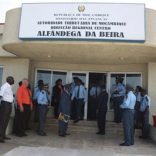


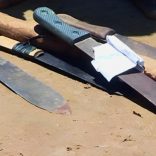
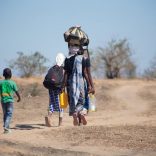
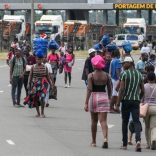

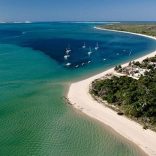
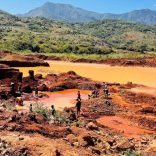

Leave a Reply
Be the First to Comment!
You must be logged in to post a comment.
You must be logged in to post a comment.